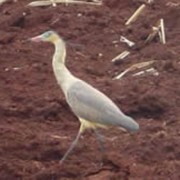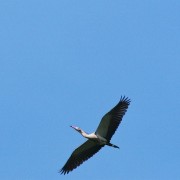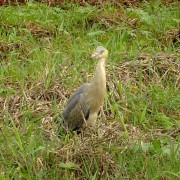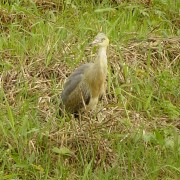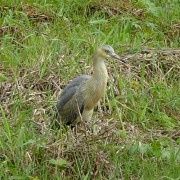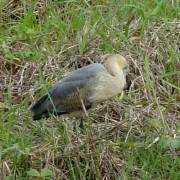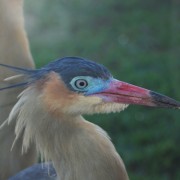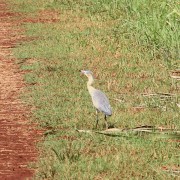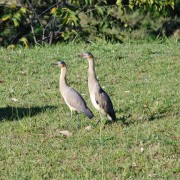Biodiversity
 Whistling heron
Syrigma sibilatrix | Temminck, 1824
Whistling heron
Syrigma sibilatrix | Temminck, 1824
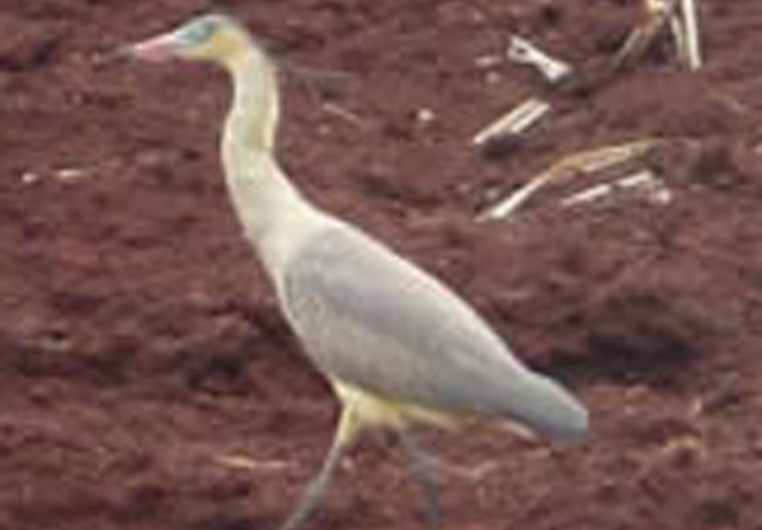
Characterization: A large species, measuring about 53cm in length; its neck, chest, and ventral areas are yellow, its back and wings are predominantly gray, it has a pale blue face and a rosy beak with a black spot on its tip.
Distribution: From Rio de Janeiro and Minas Gerais to Argentina, Paraguay, and Bolivia, in addition to Venezuela and Colombia.
Habitat: Dry fields, rice paddies or little flooded places.
Habits: Diurnal and aquatic species.
Diet: Carnivorous, primarily insectivorous; it also hunts insects in dry areas.
Breeding: This bird lays 1-2 eggs in a nest built on trees or shrubs.
In the UFRA area: This species was seen in the organic sugarcane crops, exotic woods, wetlands with herbaceous plants, in restored native forests, in drainage ditches, in forests in spontaneous regeneration, and in fields in spontaneous regeneration. It is considered little frequent, as it was spotted only 14 times.




